
All in Rome
Tour the Colosseum, sip espresso, and stroll through Trastevere in Rome
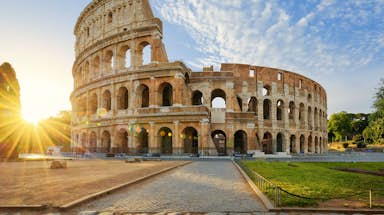
Visit this impressive ancient structure where gladiators once battled and chariots raced!
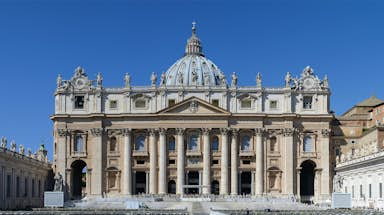
See Michelangelo's "Pieta", impressive architecture, and more in the heart of the Vatican!
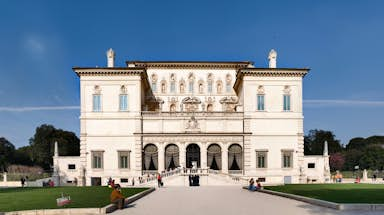
Discover the best collection of arts, sculptures, and paintings by world-renowned artists
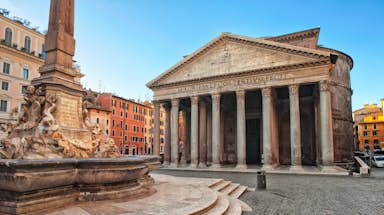
Gaze up at the oculus of Rome's ancient temple, an architectural wonder
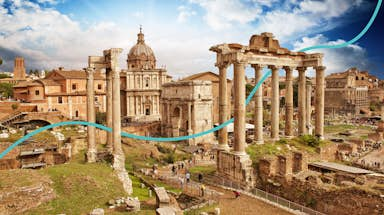
Access must-see attractions, enjoy guided tours, and see the popular sights in Rome

Book convenient airport transfers to/from the busy Rome Fiumicino Airport – thank yourself later!
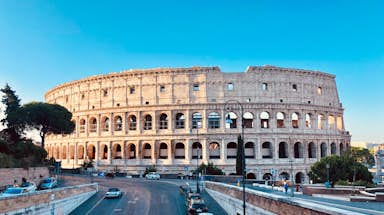
See the Eternal City on your own schedule with a hop-on hop-off tour
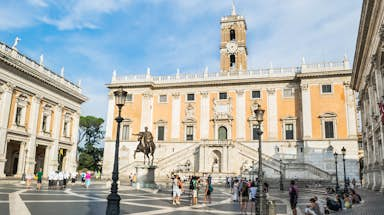
From ancient Rome to Michelangelo, find Italian treasures at the Capitoline Museum

Aquafelix is one of the top water parks in Italy. Opened in 1995, the park is located close to the port town of Civitavecchia and is popular with visitors disembarking from cruise ships, as well as those journeying from Rome. The Italian capital is just over an hour's drive away.

MagicLand is a family-friendly theme park with roller coasters, soft play areas, various live shows and performances, as well as a planetarium. It is located just 45 minutes outside of Rome.
Combine Rome favorites. Some things are better together.































Colosseum, Palatine Hill & Roman Forum At 2,000 years old, the Colosseum has been a top attraction in Rome for literal centuries. It's one of the best-preserved amphitheaters of the ancient world.
See where thousands of Romans would gather for gladiator battles and chariot races with the help of a licensed guide on a tour.
Adjacent to the Colosseum is Palatine Hill, the ruined remains of palaces built for politicians, and the Roman Forum, the center for civic life in ancient Rome – both are included in this combi ticket for the Colosseum, Roman Forum & Palatine Hill.
St. Peter's Basilica As you’re exploring Vatican City, make time for St. Peter’s Basilica. The opulent basilica contains the tomb of St. Peter, and its gold interior is sure to impress.
View jaw-dropping ceilings, gorgeous mosaics and frescoes, and incredible architecture. Level up your experience with a guided climb to the top of the dome with sweeping views of St. Peter's Square below.
The Vatican Museums and Sistine Chapel A trip to Rome is incomplete without seeing Michelangelo’s masterpiece – the Sistine Chapel Ceiling, including The Last Judgment and The Creation of Adam.
Choose a guided tour to help you traverse the Vatican Museum collection, including its classical sculptures, Renaissance pieces, and other old world artifacts.
Borghese Gallery
The Borghese Gallery features all the classic artists like Canova, Raphael, Caravaggio, and others. A guided tour will help you fully appreciate the whole of Roman art history, and also includes access to the lovely gardens surrounding the gallery – beautiful fountains, monuments, and gorgeous landscaping.
Vatican Museums
The Vatican’s divine frescos and sculptures, from Michelangelo to Raphael and Bernini, draw millions visitors from around the globe each year.
There’s so much to see while visiting the Vatican that it can be a little overwhelming, and you don’t want to go all that way only to miss its best treasures. A guided tour can help you keep your timeline intact and show you the highlights of this extensive collection.
Capitoline Museum
If you’re a history buff, you’ll go crazy for the oldest museum in the world – the Capitoline! This museum dates all the way back to 1471 and provides some incredible views of Rome from its hidden rooftop bar. Make the most of your visit with a guided tour, complete with an exclusive multimedia experience to bring history to life.
Trevi Fountain While this quintessential Roman fountain is worth a picture or two, the real wonder is what lies 9 meters beneath the surface. Uncover what lies underground with a guided tour.
Pantheon One of Rome’s most well-preserved historical monuments, the Pantheon, is an ancient architectural wonder. Its only source of natural light comes from the oculus, a circular opening at the top of the dome, which is the largest unreinforced dome on Earth.
Get the most of your visit to the Pantheon with a [(https://www.tiqets.com/en/rome-attractions-c71631/tickets-for-small-group-guided-tour-of-the-pantheon-p1052166/)guided tour, or opt for a self-guided audio tour instead.
Castel Sant’Angelo Just a 10-minute walk from St. Peter's Basilica, you'll find the stunning Castel Sant’Angelo. Castel Sant’Angelo is a three-in-one cultural activity, considering it’s a mausoleum, a monument, and a museum!
Follow an expert on a guided tour around the structure specifically built to protect Emperor Hadrian's tomb.
Spanish Steps Added in 1735, this 135-step staircase has become a popular spot for locals and tourists to take a break from the daily grind. Grab some gelato, take a seat, and take in the Roman scenery.
If you want to beat the heat during high season (and the crowds), one of the best ways to see Rome is at night!
Colosseum Opt for a guided tour after sunset to gain a completely different perspective of antiquity's most well-known amphitheater.
Trevi Fountain The marble sculptures and azure pools are illuminated at night for an extra romantic effect.
Pantheon While closed at night, this ancient structure is still bright after dark thanks to vertical floodlights that highlight the Pantheon's imposing columns.
Piazza Navona Go for a stroll through Rome's most famous square. Afterward, grab an aperitivo at any number of bars and restaurants where the local Romans gather, or take an evening guided food tour in the Eternal City.
Spanish Steps Traverse to the top at sunset for an incredible view of Rome after dark.
Spring
The months of April, May, and June in Rome cannot be beat. The weather is pleasant, and swarms of tourists haven't invaded for the high summer season.
The Roman streets will be painted with colorful flowers in bloom, and ticket lines for top attractions will be fairly short.
Fall
Once the crowds disippate at the end of the summer season, September, October, and November is prime time to visit the Eternal City.
Crisp autumn mornings and mild daily temperatures make this season ideal for sightseeing in Italy's ancient capital.
Trevi Fountain
While the fountain itself is beautiful in its own right, not many people know there's an entire world underneath the structure that dates back hundreds of years. Take a guided subterranean tour nine meters below to discover ancient foundations – including evidence of the Great Fire – among other historical artifacts.
Circo Massimo
Just off the beaten path, you'll find the remains of a giant race track used for ancient chariot races. A visit to Circo Massimo is a great way to see some Roman ruins and avoid the crowds at the Colosseum.
Time your Roman holiday just right, and you could be in time for the summer opera series hosted at Circo Massimo, where works from Puccini and Verdi are performed. Modern artists like Guns n' Roses and Imagine Dragons have also performed here!
Appian Way
This old Roman road was once the main commercial vein connecting Rome to Brindisi in southeast Italy. A great way to escape the buzzing city of Rome to experience the natural Tuscan countryside, you can rent a bike (or walk) along the road for as long as you wish with historical landmarks to discover along the way.